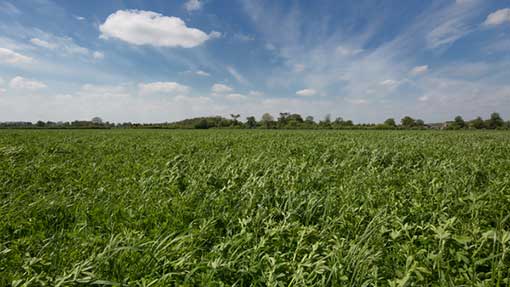Be clear on greening, livestock farmers warned

Livestock producers must not assume they are exempt from greening crop diversification and EFA requirements – what qualifies as an “arable” area under the new regime is often misunderstood, warns Alice De Soer, adviser with the Central Association of Agricultural Valuers.
Some do not realise the area of fodder crops, such as lucerne, which they rotate around their holdings, is counted as temporary grass and consequently as part of their arable area, she said.
Fodder crops such as forage maize, kale and fodder roots also count as arable for crop diversification purposes. Many claimants will automatically meet the requirements (see “Greening tips”) because of their acreage and/or crop mix, or will qualify for exemptions, but everyone must do that initial calculation of arable area, said Ms De Soer.
See also: Hedging rules will penalise us, south-west farmers fear
Greening tips
- Forage and temporary grass count as arable area
- Land holding changes (sales, purchases and lettings) may affect ability to meet greening
- EFA covers the calendar year
- Crop diversification is for a set period, which member state governments have to nominate but is likely to include 15 May
- Use the Defra/RPA published crops list for crop diversification
- Crop failure – still to be decided how this will be treated regarding crop diversification and EFAs
“Claimants also need to think ahead and appreciate that their arable area assessment is a forward-looking calculation to include 15 May 2015.”
For some, their arable area may change between now and next year, which may affect their EFA and crop diversification. This could happen through changes in land holding, for example, where land is purchased. This could impact their assessment of arable area for greening and in particular crop diversification requirements, said Ms De Soer.
“A key thing to watch with crop diversification includes understanding that some crops, which may be thought of as separate, are in fact a single crop. What farmers think are different crops is not necessarily what the commission thinks.
“For example, a farm with oilseed rape, turnips and cabbage would have three crops but a specialist brassica grower with cabbage, cauliflower and broccoli would only have one.”
Greening rules
- Those with between 10ha and 30ha of arable land must cultivate at least two crops
- Those with more than 30ha of arable must cultivate at least three crops
- Main crop may cover a maximum of 75% of the arable area
- Where three crops are being grown, the two main crops must not cover more than 95% of the arable area
Beyond crop mix, crop diversification also has percentage coverage requirements so any arable land transactions between now and 15 May next year will need to be considered carefully for their effect on this (see “Greening rules”).
Taking on extra land may tip a claimant over the acreage thresholds at which they need to comply with crop diversification and may skew crop shares. It is likely it would also require changes to meet EFA requirements.
For anyone considering transferring entitlements in time for next year’s Basic Payments Scheme claim, there may be a benefit in doing so by the initial 19 October 2014 cut-off date, said Ms De Soer.
“Until then the transferee does not have to meet the ‘active farmer’ test and the transfer is still done using the paper-based RLE1 form. “Why wait until there is a new system in place which may involve jumping through more hoops?”
